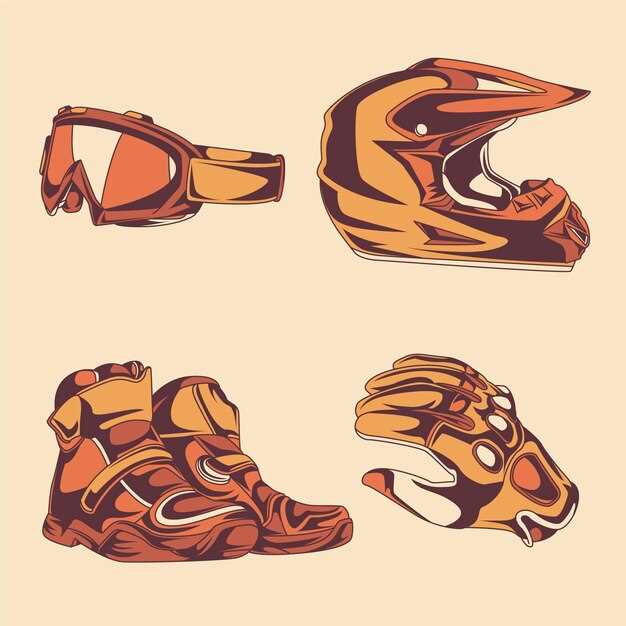
When it comes to footwear for motorsport enthusiasts, the choice between race boots and street boots can significantly impact both performance and safety. Understanding the distinctions between these two categories of boots is crucial for drivers, whether they’re competing on the track or enjoying a leisurely drive on the street.
Race boots are specifically designed for high-performance environments, offering features that prioritize grip, flexibility, and protection. These boots typically incorporate materials that are engineered to withstand extreme conditions, such as heat and abrasion, while providing a lightweight feel. The design often includes a snug fit that allows for maximum pedal feel and control, essential for precision driving in competitive scenarios.
In contrast, street boots focus on comfort and versatility for everyday use. While they may offer some elements of safety, such as reinforced toe caps and slip-resistant soles, their primary goal is to provide a stylish and comfortable option for casual driving. Street boots often have a more relaxed fit and are constructed from durable materials that prioritize aesthetic appeal over the specialized performance found in race boots.
As we delve deeper into the characteristics and functionalities of both types of footwear, it becomes evident that selecting the right type of boot is not merely a matter of preference, but one that can affect a driver’s performance and overall experience on the road or track.
Material Composition: How it Affects Performance and Comfort
The material composition of race boots and street boots significantly influences their performance and comfort levels. Race boots are typically constructed from high-performance materials, designed to enhance responsiveness and reduce weight. Common materials include advanced synthetic fabrics, carbon fiber, and specialized leather types. These materials provide excellent durability while maintaining a lightweight structure, crucial for competitive environments where every ounce matters.
In contrast, street boots often use more traditional materials such as full-grain leather and canvas, prioritizing comfort and flexibility over sheer performance. The use of softer materials in street boots allows for a more relaxed fit, accommodating daily wear and providing greater comfort for extended periods. However, this can result in a heavier overall boot and less immediate feedback compared to race-specific designs.
Furthermore, the insulation and waterproofing features differ greatly between the two types. Race boots may incorporate breathable membranes to prevent moisture buildup during intense activity, while street boots often utilize thicker materials for better insulation and weather resistance, adapting them for various urban conditions. The choice of materials not only affects performance in terms of grip and feel but also impacts overall comfort based on the intended usage scenario.
Ultimately, understanding the material differences between race and street boots helps consumers make informed decisions based on their needs, balancing the trade-offs between performance, comfort, and durability.
Design Features: What to Look for in Race vs. Street Boots
When selecting between race boots and street boots, it is essential to understand their distinct design features tailored to their specific uses.
Race Boots

- Aerodynamic Profile: Race boots have a streamlined design to minimize wind resistance, enhancing speed and performance on the track.
- Stiff Soles: These boots often feature rigid soles for improved power transfer from the foot to the bike. This stiffness aids in better control during high-speed maneuvers.
- Lighter Materials: Manufacturers use advanced, lightweight materials to reduce overall boot weight, allowing for quicker movements and less fatigue during races.
- Higher Ankle Support: Increased ankle support is crucial in race boots, providing stability while cornering and preventing injuries during aggressive riding.
- Ventilation: While attention to aerodynamics is critical, many race boots incorporate ventilation systems to manage heat during extended periods of use.
- Flexibility in Key Areas: Design often incorporates flex zones around the ankle and toe areas to allow for easier movement while maintaining support.
- Additional Safety Features: Reinforcements in key impact areas, such as toe sliders, and the use of advanced materials for abrasion resistance are common in race-specific designs.
Street Boots
- Comfort and Fit: Street boots prioritize comfort for long rides, often featuring cushioned insoles and a more relaxed fit to accommodate extended periods of wear.
- Weather Resistance: Many street boots are designed to provide protection against various weather conditions, often incorporating waterproof materials or treatments.
- Casual Aesthetic: Street boots typically feature a more stylish and versatile design, allowing riders to wear them off the bike without compromising on fashion.
- Moderate Flexibility: A balance between stiffness and flexibility is important for street boots, enabling comfortable walking and better control while riding.
- Safety Features: While not as extensive as race boots, street boots still include safety elements like reinforced toe boxes and ankle protection to ensure rider safety.
- Removable Liners: Many street boots feature removable and washable liners, enhancing hygiene and comfort over time.
In summary, understanding these design features can significantly influence your choice between race and street boots based on your riding style, comfort preferences, and safety requirements.
Usage Scenarios: When to Choose Race Boots Over Street Boots

Choosing between race boots and street boots depends on the type of riding experience you seek. Race boots are specifically designed for the demands of high-performance riding on track environments, while street boots cater to everyday riding situations. Here are some scenarios where race boots would be the preferable choice:
1. Track Days and Races: If you frequently participate in track days or competitive racing, race boots are essential. They provide superior grip, support, and protection necessary for high-speed cornering and braking. The stiff construction enhances your control over the motorcycle, allowing you to achieve optimal performance.
2. Aggressive Riding Styles: For riders who prioritize aggressive riding techniques such as leaning into sharp turns or rapid acceleration, race boots support the necessary foot and ankle movements. Their design ensures minimal flex, which translates to better power transfer to the bike.
3. Safety Requirements: In racing conditions, the importance of safety cannot be overstated. Race boots generally offer advanced protection features, including reinforced toe boxes, heel cups, and shin guards. If you are pushing the limits of your motorcycle, wearing race boots can significantly reduce the risk of injury in the event of a fall.
4. Enhanced Feedback: Race boots deliver better feedback from the motorcycle due to their rigid soles. This feature helps riders make quicker decisions based on the bike’s response, making them ideal for competitive situations where split-second choices matter.
5. Competitive Events: If you plan to attend competitive events like motocross, supermoto, or any other racing series, race boots are mandatory. Event regulations often specify the use of specific safety gear, including race boots, which are built to withstand the rigors of competition.
In conclusion, while race boots excel in track environments and competitive settings, they may not be the best option for casual street riding due to their stiffness and lack of comfort for prolonged use. Assess your riding style and select the appropriate footwear accordingly for optimum performance and safety.